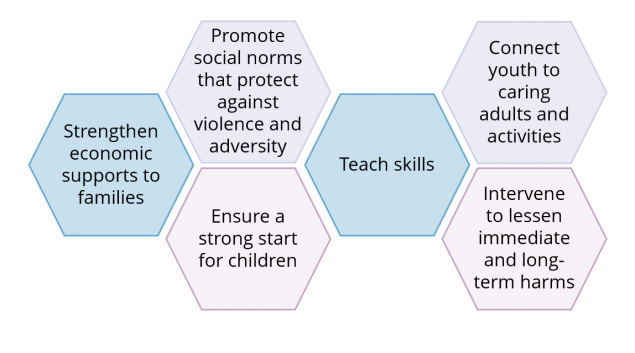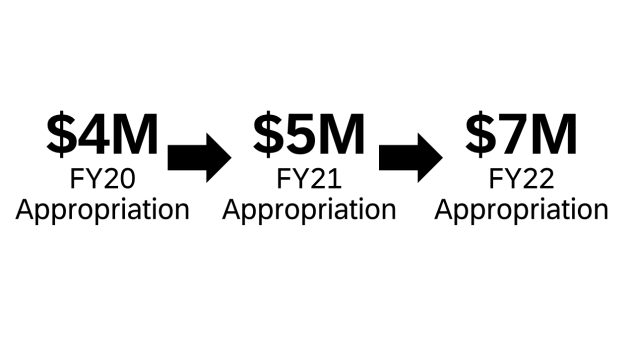NCIPC Adverse Childhood Experiences (ACEs) Funding
The Centers for Disease Control and Prevention (CDC) National Center for Injury Prevention and Control (NCIPC/Injury Center) provides funding for states and communities to track and prevent ACEs.

The six strategies above are featured in the ACEs Prevention Resource. This resource helps states and communities use the best available evidence to prevent ACEs from happening in the first place and to lessen harms when ACEs do occur.
Want to learn more about what ACEs are and how they affect the lifespan?
State Snapshots
Select a funded state from the map or data table below to view a snapshot of the ACEs activities supported by NCIPC.
While NCIPC supports other programs that work to prevent and mitigate ACEs, the map below shows funding provided directly to state and local recipients from the ACEs FY22 appropriation. Each snapshot contains:
- Overall ACEs 2022 funding, including program categories and recipient information
- Key ACEs-related statistics
- Examples of how states are working to prevent and mitigate ACEs
Hover over the map to quickly view information about the funding and ACEs-related statistics for each state. Use the filter to see which states are funded for each award: Preventing Adverse Childhood Experiences: Data to Action (PACE:D2A) and the Youth Risk Behavior Survey (YRBS). Please note that YRBS funding was appropriated in FY22 for the administration of the 2023 survey.
ACEs Prevention and Mitigation in Tribal Communities

In FY20, NCIPC began funding tribal organizations through CDC’s umbrella cooperative agreement, Tribal Public Health Capacity Building and Quality Improvement Cooperative Agreement, to prevent and mitigate ACEs among American Indians and Alaska Natives (AI/AN).
The recipients and their associated annual funding amounts are below:
- Cherokee Nation: $180,000
- Wabanaki Health and Wellness: $150,000
The Cherokee Nation also received $3,000 in FY22 to collect ACEs data from tribal youth through their administration of CDC’s Youth Risk Behavior Survey (YRBS). This funding was appropriated in FY22 for use in administrating the 2023 survey.
To read more about ACEs prevention and mitigation efforts in tribal communities, click on the dropdowns for each of the recipients below.
To learn more about other CDC injury prevention efforts in tribal communities, click here.
Funding Over Time
CDC’s Injury Center was first appropriated a budget line for ACEs activities in 2020. Since then, the Injury Center has increased and expanded its funding to a variety of state, tribal, and non-governmental organizations. The visuals below are not comprehensive of all funding related to ACEs, but of major ACEs awards.

In FY 2020, NCIPC was appropriated a new budget line for ACEs. Initially funded at $4 million, the FY 2022 appropriation was $7 million.
Where We’ve Been
The Injury Center’s national leadership and increased support to states, tribes, and non-governmental organizations are working to prevent and mitigate ACEs across the United States. Learn more about the key milestones and programs since 2020.
Three academic institutions received a research project grant (R01) for preventing violence and violence related injury. These universities and investigators investigate the interaction of ACEs with other factors and forms of violence.
- Prevalence of ACEs MMWR - BRFSS
- ACEs Vital Signs MMWR
- ACEs Infographic
- ACEs Prevention Resource
- ACEs Prevention Strategy
- CDC Operating Plans
- POLARIS: ACEsCDC's portal for navigating policy-relevant tools, trainings, and information

Take CDC’s VetoViolence Preventing ACEs Trainings!
These trainings will help you understand, recognize, and prevent ACEs.
There are introductory trainings for everyone, as well as provider-specific trainings for mental health and pediatric providers. Provider-specific trainings for faith-based groups and educators are also available.
To view specific ACEs training resources, visit the Preventing ACEs Resources page.